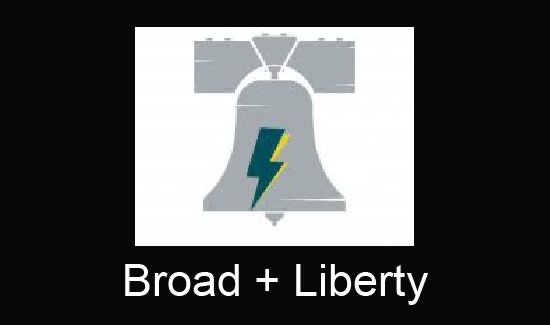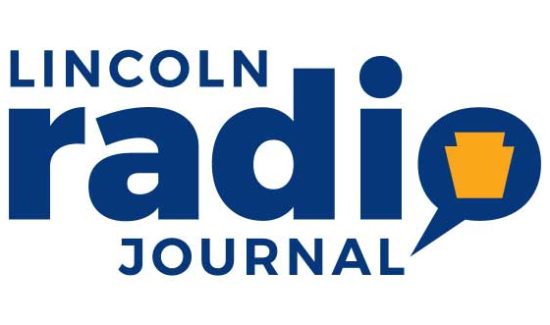Reviewing Pittsburgh’s 2020 Finances
![]()
(March 10, 2021)–Summary: Monthly revenue and expenditure reports from the Pittsburgh City Controller’s office show that in 2020 the city collected $551.6 million in revenue and spent $596.3 million—a deficit of $44.7 million. End-of-year transfers and use of reserves will be made clear when the Comprehensive Annual Financial Report is released in May.
_________________________________________________________________
Revenue Detail
On the revenue side, $551.6 million is 90.7 percent of the $608.2 million budgeted for 2020 and is 93 percent of the $592.6 million collected in 2019. The controller’s reports contain 196 entries for revenue items. These categories include taxes the city collects in the year they are levied as well as delinquent collections and penalties and interest. In addition, there are numerous licenses and permits, charges for services, money from other governments, etc.
In 2020, 58 of these 196 items collected more revenue than in 2019. By comparison, at the end of 2019 there were 106 revenue items of 191 entries that were greater than what was collected in 2018. Between 2019 and 2020 several new entries for licenses and permits, charges for services and intergovernmental revenue were added.
About 80 percent of the city’s revenue comes from taxes and the totals raised in 2020 show mixed results when compared to the budget.
The city’s property tax collections totaled $149.7 million. That total came in very close to budget ($150.1 million or 99.7 percent). Earned income tax collections of $109.4 million slightly exceeded the budget ($108.6 million or 100.7 percent). That may not be the case this year if filings based on last year’s earned income are short or if the Pittsburgh Public Schools is successful in its effort end to the sharing arrangement mandated by state law.
Three taxes came close or exceeded 90 percent of budget: local services ($13.9 million or 94 percent), payroll preparation ($63.7 million or 89.6 percent) and the city’s share of the Regional Asset District sales tax ($21.4 million or 91 percent). The sole city tax to have its rate increased in 2020, the deed transfer tax, exceeded the budget ($45.1 million or 102.9 percent).
City Controller Reports of Monthly Revenues ($000s)
| Revenue Category | 2020 Budget | 2020 Actual | Actual – Budget | Actual / Budget (%) |
| Taxes | 495,463 | 446,285 | -49,178 | 90.1 |
| Licenses and Permits | 14,244 | 11,619 | -2,625 | 81.6 |
| Charges for Services | 41,758 | 35,122 | -6,636 | 84.1 |
| Fines and Forfeitures | 10,532 | 6,458 | -4,074 | 61.3 |
| Intergovernmental | 43,593 | 50,543 | 6,950 | 115.9 |
| Investment Earnings | 2,586 | 1,419 | -1,167 | 54.9 |
| Miscellaneous | 56 | 157 | 101 | 280.4 |
| Annual | 608,232 | 551,603 | -56,629 | 90.7 |
There are three taxes closely connected to commuting and events that were significantly curtailed last year and, as a result, fell short.
A stay-at-home order, social distancing and telecommuting meant workers who normally drive into the city and park but did not owing to the pandemic and thus did not pay the city’s parking tax. This tax raised $33.8 million, which was 57 percent of budget ($59.3 million) a shortfall of $25.5 million.
With no concerts, sporting events or other performances there were no tickets to be sold and that affected the city’s amusement tax. At $3.9 million, the 2020 collections were 21.1 percent of budget ($18.3 million). The facilities usage fee, which is applied to non-resident athletes and performers who utilize facilities in the city, likewise declined due to shortened sports seasons or canceled performances. At $3.3 million the fee raised just over 60 percent of budget ($5.5 million).
One can see how the pandemic affected non-tax revenue as well. With fewer vehicles and a temporary waiver of parking meter enforcement, that reduced the revenue from parking meters ($8.7 million in 2020 compared to $9.6 million budgeted). Revenue from parking tickets and traffic court fines were down. With less driving overall statewide, the city’s distribution from the liquid-fuels money for road repair, an intergovernmental revenue, also decreased ($2 million in 2020; the city budgeted $4 million).
A limitation on events showed up in the decline in city revenue for parade and picnic/ballfield permits. People who were at home and decided to tackle home improvement projects likely added to the increase in revenue for permits related to residential building, electric, HVAC, curb cuts and zoning and planning fees.
The intergovernmental revenue and miscellaneous categories exceeded 2020’s budget amount. Intergovernmental revenue is where the city records revenues from the Water and Sewer Authority, Urban Redevelopment Authority, and state and federal governments. This was likely the money the city received from Allegheny County’s share of the federal CARES Act.
Economic activity impacts revenue. The Bureau of Labor Statistics (BLS) household survey for Pittsburgh (which counts residents who are working, regardless of where their place of employment is located, as well as those looking for work) shows that for 2020 the monthly average of city residents employed fell by 10,457 from 2019 with April the hardest hit at 22,248 fewer residents working. While the unemployment rate dropped from a high of 15.2 percent in April to 6.7 percent in December, bear in mind that the labor force (persons working or looking for work) actually fell more dramatically in November (7,000) and December (7,305) from the year-earlier reading than it did in April (4,905). For the five months following the declines in labor force from the year earlier dropped substantially, averaging about 2,000. Then in October, much larger drops in the labor force occurred through year end.
The BLS estimate shows 10,000 people listed as unemployed in December 2020, less than half of April’s count but the big drop in labor force was a big part in that improvement. Dropping out of the labor force means a person is no longer employed or looking for work and may be discouraged about finding work.
Expenditure Detail
On the expenditure side, the $596.3 million was 96 percent of the $621.2 million budgeted for the year and 104.9 percent of 2019 spending. Separating spending into salaries and benefits and all other expenses (professional services, property services, supplies, etc.) for the 27 departments, bureaus, offices, boards and commissions that are accounted for in the controller’s reports shows that salaries and benefits were 99.5 percent of budget ($458.4 million actual to $460.7 million budget) while the other expenses were 76.4 percent of budget ($122.6 million to $160.5 million).
Three of the departments, bureaus, etc. had expenditures that exceeded budget: police, emergency medical services and public works administration. Seven spent between 90 and 99.9 percent of budget.
City Controller Reports of Monthly Expenditures ($000s)
Ten Highest Actual Spending as % of Budget
| Department/Office/Bureau/Board/Commission | 2020 Budget | 2020 Actual | Actual – Budget | Actual / Budget (%) |
| Public Safety-Police | 115,528 | 125,642 | 10,144 | 108.8 |
| Public Safety–Emergency Medical Services | 24,152 | 26,200 | 2,048 | 108.5 |
| Public Works-Administration | 1,153 | 1,162 | 9 | 100.8 |
| Public Safety-Fire | 91,573 | 91,103 | -470 | 99.5 |
| Human Relations Commission | 554 | 532 | -22 | 96.0 |
| Council | 2,656 | 2,530 | -126 | 95.3 |
| Public Works-Environmental Services | 18,473 | 17,515 | -958 | 94.8 |
| Finance Department | 179,724 | 163,970 | -15,754 | 91.2 |
| Public Safety-Administration | 13,035 | 11,801 | -1,234 | 90.5 |
| Mayor | 1,461 | 1,317 | -144 | 90.1 |
2021 Budget
Spending in the 2021 operating budget is lower than the 2020 budget and contains dollar figures for workforce reductions that the mayor has said will occur in July if there is no federal stimulus that involves aid to local governments. A news article on the proposed stimulus package stated that the estimated amount of relief Pittsburgh could qualify for is $328 million; a revised number puts the figure at $355 million. Note that an analysis by the National Association of Counties states that aid to cities with populations of at least 50,000 is based on “a modified [Community Development Block Grant] formula.”
A relief package of over $300 million would represent more than half of recent years’ budgets. If awarded—and permitted to be used for revenue replacement unlike the CARES Act—that will likely take the focus off of what city government can do to save taxpayer dollars.
Eric Montarti, Research Director
Jake Haulk, Ph.D., President-emeritus
If you wish to support our efforts please consider becoming a donor to the Allegheny Institute.The Allegheny Institute is a 501(c)(3) non-profit organization and all contributions are tax deductible. You can donate through our website or mail your contribution to:
The Allegheny Institute
305 Mt. Lebanon Boulevard
Suite 208
Pittsburgh, PA15234
For more on this topic click here.







